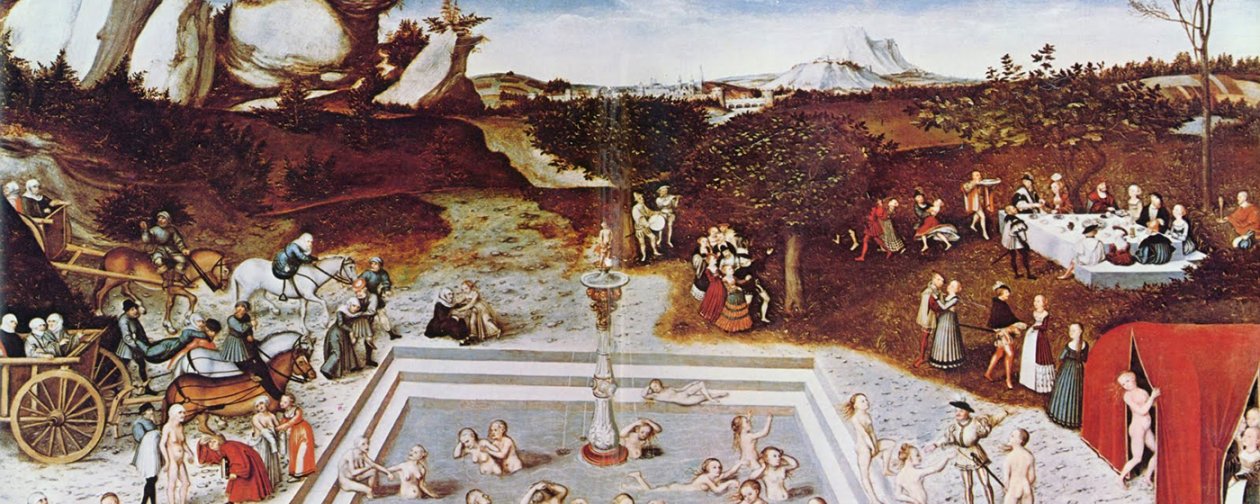Medieval Paradise Cockaigne – Land Of Extreme Pleasure And Luxury
Ellen Lloyd - AncientPages.com - Some myths and legends are based on memories of ancient heroes or events, some tales are pure fantasies. There are also stories that reflect our ancestors' desire to live a different life, far away from sorrow, restrictions, and poverty. To escape the frustration of daily life was a dream to many.
The legend of Cockaigne describes a place where humans enjoy extreme pleasure and luxury. It’s difficult to image such a place could have ever existed, but sometime during the Middle Age the legend of Cockaigne was born and this unusual paradise where people enjoyed a perfect life was mentioned in various poems, songs and books.
Pieter Bruegel the Elder: Luilekkerland ("The Land of Cockaigne "), oil on panel (1567; Alte Pinakothek, Munich). Credit: Public Domain
The origin of the Italian name Cockaigne is not entirely clear, and it is often confused with Cockney, a dialect of the English language traditionally spoken by working-class Londoners. Scholars suggest the name Cockaigne is connected with Latin coquere, through a word meaning “cake,” the literal sense thus being “The Land of Cakes.”
Cockaigne - The Land Of Plenty Was A Medieval Paradise
For Medieval dreamers, Cockaigne – the Land of Plenty, was a paradise, an escape from earthly suffering. In Cockaigne people enjoyed plenty of food, the rivers were of wine, the houses were built of cake and barley-sugar and the streets were paved with pastry.
No-one had to worry about money because shops supplied goods for nothing. It is a place “where money has been exchanged for the good life,” wrote a medieval poet in an enthusiastic description of Cockaigne, the mythical Land of Plenty, and he who sleeps the longest, earns the most.
Your entire existence was free from sorrow and worries that so often trouble our daily lives.
According to Herman Pleij, emeritus professor of Medieval Dutch literature at the University of Amsterdam, “to the Medieval mind, modern-day western Europe comes pretty close to a bona fide Cockaigne. You have fast food available 24/7, climate control, free love, workless income, and plastic surgery to prolong youth.”
See also:
Mythical Kingdom Of Prester John – Did It Exist?
Hesperides – Greek Nymphs Who Guarded Fabled Garden With Divine Apples Of Immortality
Giant Mimir And The Well Of Wisdom In Norse Beliefs
In the Land of Plenty people practiced free love, they never argued about anything and they enjoyed eternal youth. The weather was always beautiful, and everyone was dressed in gorgeous clothes.
Everyone living at the end of the Middle Ages had heard of Cockaigne at one time or another. Where the land of Plenty was located is unknown, but it was believed to be tucked away in some remote corner of the globe.
Whether life in the land of Cockaigne was so perfect can be discussed. People were mainly occupied with idleness and gluttony, but to the Medieval peasant who had to struggle and work hard for daily food, it was undoubtedly a paradise.
In his book, Dreaming of Cockaigne, Pleij writes that “by the Middle Ages no one any longer believed in such a place, yet the stories about it continued to circulate around Europe for centuries. Apparently it was vi- tally important to be able to fantasize about a place where everyday worries did not exist and overcompensation was offered in the form of dreams of the ideal life.
The Land of Plenty - Cockaigne was a dream to many people living during the Middle Ages. Image credit: alimentarium.org
The stories about Cockaigne even competed with one another for the greatest entertainment value, incorporating contrasts—as absurd as they were grotesque—to combat the fear, sometimes driven to frantic heights, that this already wretched earthly existence would suddenly take a turn for the worse. These images thus linked the seriousness of the daily fight for survival with the humor of hyperbole to produce hilarious topsy-turvy worlds that proved to have didactic functions as well, supplying directives concerning desirable social behavior and the attainment of self-knowledge, as well as encouraging reflection on the nature of earthly existence.”
People became influenced by the story of Cockaigne and it appeared in more modern literature and art.
The Brothers Grimm for example retold the fairy tale Das Märchen vom Schlaraffenland ("The Tale About the Land of Cockaigne"). In the Adventures of Pinocchio, a children novel written by Carlo Collodi, the land of Toys is said to be located in Cockaigne.
The term has also been humorously applied to London, and to the rich quarters in Paris.
Written by Ellen Lloyd – AncientPages.com
Copyright © AncientPages.com All rights reserved. This material may not be published, broadcast, rewritten or redistributed in whole or part without the express written permission of AncientPages.com
Expand for referencesMore From Ancient Pages
-
 The Maya Produced Rubber 3,000 Years Before Goodyear
Ancient History Facts | Mar 12, 2016
The Maya Produced Rubber 3,000 Years Before Goodyear
Ancient History Facts | Mar 12, 2016 -
 Are The Strange Lawrence Brook Carvings In New Jersey A Cryptic Message?
Featured Stories | Feb 10, 2023
Are The Strange Lawrence Brook Carvings In New Jersey A Cryptic Message?
Featured Stories | Feb 10, 2023 -
 Nygrotta: Species Migration Occurred Due To Climatic Shifts Millennia Ago – Ancient DNA And Bones Show
Paleontology | Apr 5, 2024
Nygrotta: Species Migration Occurred Due To Climatic Shifts Millennia Ago – Ancient DNA And Bones Show
Paleontology | Apr 5, 2024 -
 Unsolved Ancient Mystery Of Lost Pre-Olmec Civilization – Evidence Of Advanced Scientific Knowledge That Could Re-Write History
Civilizations | Jul 16, 2018
Unsolved Ancient Mystery Of Lost Pre-Olmec Civilization – Evidence Of Advanced Scientific Knowledge That Could Re-Write History
Civilizations | Jul 16, 2018 -
 Neanderthals May Have Been Carnivores – New Study
Archaeology | Oct 17, 2022
Neanderthals May Have Been Carnivores – New Study
Archaeology | Oct 17, 2022 -
 Maize-Based Diet Of Ancient Maya, Vulnerability To Drought And Collapse Of Society
Archaeology | Jul 8, 2019
Maize-Based Diet Of Ancient Maya, Vulnerability To Drought And Collapse Of Society
Archaeology | Jul 8, 2019 -
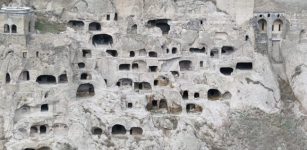 Spectacular Vardzia Cave Monastery – Huge Underground Complex Founded By The ‘Mountain Queen’ Tamar
Featured Stories | Dec 28, 2015
Spectacular Vardzia Cave Monastery – Huge Underground Complex Founded By The ‘Mountain Queen’ Tamar
Featured Stories | Dec 28, 2015 -
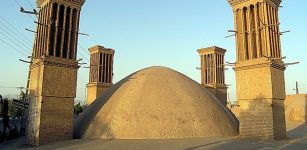 Remarkable Ancient Windcatchers: Air Conditioning Systems Built Since Antiquity
Ancient Technology | Sep 3, 2016
Remarkable Ancient Windcatchers: Air Conditioning Systems Built Since Antiquity
Ancient Technology | Sep 3, 2016 -
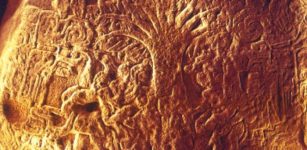 Ceiba Tree: Sacred Tree Of Life Of Maya People And Universal Concept In Ancient Beliefs
Celtic Mythology | Jun 12, 2017
Ceiba Tree: Sacred Tree Of Life Of Maya People And Universal Concept In Ancient Beliefs
Celtic Mythology | Jun 12, 2017 -
 Underwater Drone Images Reveal Oldest Human-Made Structure In The Baltic Sea
Archaeology | Feb 13, 2024
Underwater Drone Images Reveal Oldest Human-Made Structure In The Baltic Sea
Archaeology | Feb 13, 2024 -
 Jersey’s Ancient Faldouet Dolmen Vandalized To Extract Quartz Crystals
News | Nov 10, 2020
Jersey’s Ancient Faldouet Dolmen Vandalized To Extract Quartz Crystals
News | Nov 10, 2020 -
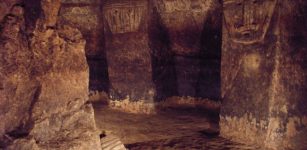 Huge Subterranean Pre-Columbian Shaft Tombs In Tierradentro, Colombia
Featured Stories | Apr 28, 2021
Huge Subterranean Pre-Columbian Shaft Tombs In Tierradentro, Colombia
Featured Stories | Apr 28, 2021 -
 Weapons Left By Barbarian Tribes Discovered In Polish Forest
Archaeology | Jan 26, 2024
Weapons Left By Barbarian Tribes Discovered In Polish Forest
Archaeology | Jan 26, 2024 -
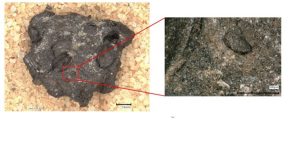 Millet Bread And Pulse Dough From Early Iron Age South India
Archaeology | Dec 20, 2021
Millet Bread And Pulse Dough From Early Iron Age South India
Archaeology | Dec 20, 2021 -
 Native American Population Does Not Originate In Japan – Genetics And Skeletal Biology Questioned
Archaeology | Nov 15, 2021
Native American Population Does Not Originate In Japan – Genetics And Skeletal Biology Questioned
Archaeology | Nov 15, 2021 -
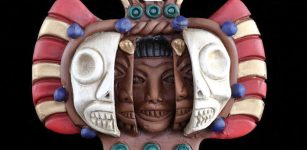 Supay: God Of Death And Underworld And Ruler Over Race Of Demons According To Inca Beliefs
Featured Stories | Jun 7, 2020
Supay: God Of Death And Underworld And Ruler Over Race Of Demons According To Inca Beliefs
Featured Stories | Jun 7, 2020 -
 Jolabokaflod – Iceland’s Wonderful Christmas Book Flood Tradition – Exchange Books As Christmas Eve Presents And Spend The Evening Reading
Ancient Traditions And Customs | Dec 21, 2017
Jolabokaflod – Iceland’s Wonderful Christmas Book Flood Tradition – Exchange Books As Christmas Eve Presents And Spend The Evening Reading
Ancient Traditions And Customs | Dec 21, 2017 -
 Feared Skinwalker – Shapeshifter That Uses Mind Control To Hurt Victims In Native American Mythology
Featured Stories | May 16, 2019
Feared Skinwalker – Shapeshifter That Uses Mind Control To Hurt Victims In Native American Mythology
Featured Stories | May 16, 2019 -
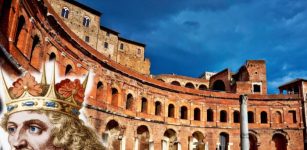 On This Day In History: First Siege Of Rome Began – On March 2, 537
News | Mar 2, 2017
On This Day In History: First Siege Of Rome Began – On March 2, 537
News | Mar 2, 2017 -
 Who Was King Menes? Mystery Of This Legendary Ruler May Go Back 20,000 Years
Civilizations | May 1, 2017
Who Was King Menes? Mystery Of This Legendary Ruler May Go Back 20,000 Years
Civilizations | May 1, 2017


